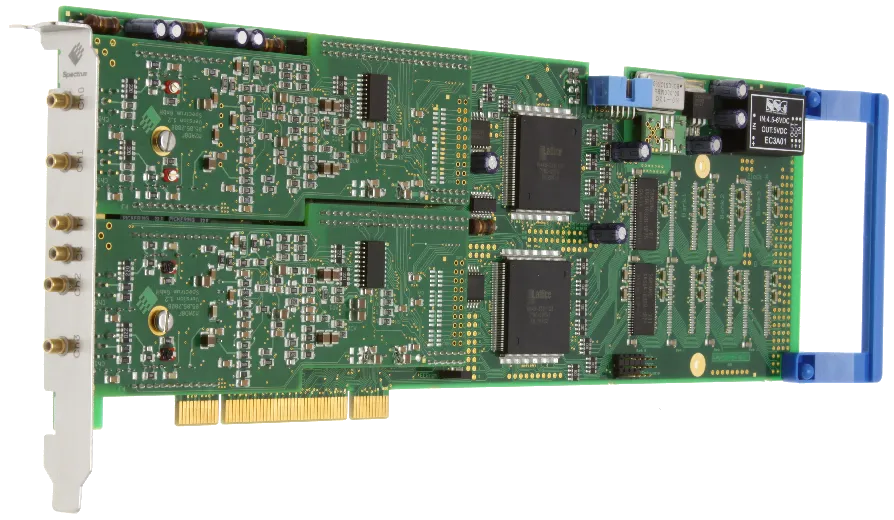THIS PRODUCT IS END-OF-LIFE. Show more about end-life-products policy.
Recommended product:
Product:
MI.7020
Fast digital I/O with TTL levels
Description:
The MI.70xx series of fast digital I/O boards offer a resolution between 1 bit and 64 bit with a maximum sampling rate of 125 MS/s (60 MS/s). Every 16 bit / 32 bit of the board can be separately programmed for input or output. The on-board memory of up to 512 MByte can be used completely for recording or replaying digital data. Alternatively the MI.70xx can be used in FIFO mode. Then data is transferred on-line to PC memory or hard disk. The internal standard synchronisation bus allows synchronisation of several MI.xxxx boards. Therefore the MI.70xx board can be used as an enlargement to analogue boards.
Facts & Features:
- Up to 125 MS/s at 32 bit
- 8, 16 or 32 bit mode
- 110 Ohm input impedance selectable
- Inputs 3.3 V and 5 V TTL compatible
- Outputs 3.3 V TTL compatible
- Up to 512 MByte on-board memory
- 16 MByte standard memory installed
- Pattern/Edge/Pulsewidth trigger
- FIFO mode for input and output
- Synchronization possible
- 33 MHz 32 bit PCI interface
- 5V / 3.3V PCI compatible
- 100% compatible to conventional PCI >= V2.1
- Sustained streaming mode up to 100 MB/s
Application examples:
- Pattern generation for parameter tester
- A/D converter development
- Data acquisition at a medical tomograph
- Production test of IGBT modules
- CCD sensor simulation
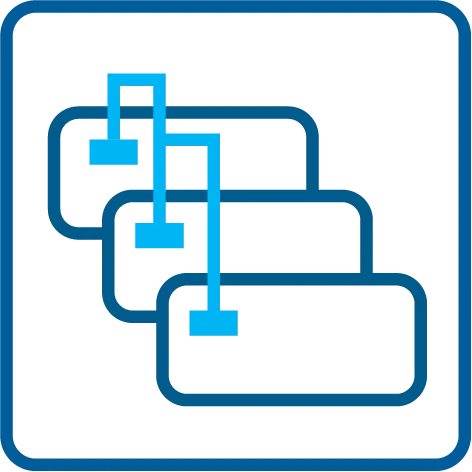
Cascading (Optional)
The cascading option synchronizes up to 4 Spectrum boards internally. It's the simplest way to build up a multi channel system. On the internal synchronisation bus clock and trigger signals are routed between the different boards. All connected boards are then working with the same clock and trigger information. There is a phase delay between two boards of about 500 picoseconds when this synchronization option is used.
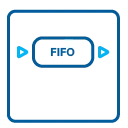
FIFO mode
The FIFO mode is designed for continuous data transfer between measurement board and PC memory (up to 245 MB/s on a PCI-X slot, up to 125 MB/s on a PCI slot and up to 160 MB/s on a PCIe slot) or hard disk. The control of the data stream is done automatically by the driver on interrupt request. The complete installed on-board memory is used for buffer data, making the continuous streaming extremely reliable.Repeated Output
When repeated output is used the data of the on-board memory is replayed continuously until a stop command is executed or N times. As trigger source one can use the external TTL trigger or the software trigger.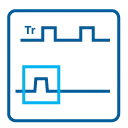
Singleshot Output
When singleshot output is activated the data of the on-board memory is replayed exactly one time. As trigger source one can use the external TTL trigger or the software trigger.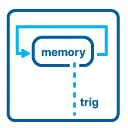
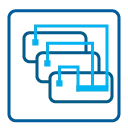
Star-Hub (Optional)
The star-hub is an additional module allowing the phase stable synchronization of up to 16 boards in one system. Independent of the number of boards there is no phase delay between all channels. The star-hub distributes trigger and clock information between all boards. As a result all connected boards are running with the same clock and the same trigger. All trigger sources can be combined with OR/AND allowing all channels of all cards to be trigger source at the same time. The star-hub is available as 5 card and 16 card version. The 5 card version doesn't need an extra slot.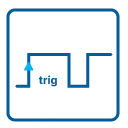
External Trigger
All boards can be triggered using an external TTL signal. It's possible to use positive or negative edge also in combination with a programmable pulse width. An internally recognized trigger event can - when activated by software - be routed to the trigger connector to start external instruments.
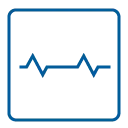
Gated Replay
The Gated Sampling option allows data replay controlled by an external gate signal. Data is only replayed if the gate signal has a programmed level.
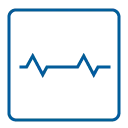

Multiple Replay
The Multiple Replay option allows the fast repetition output on several trigger events without restarting the hardware. With this option very fast repetition rates can be achieved. The on-board memory is divided in several segments of same size. Each of them is generated if a trigger event occurs.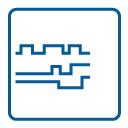
Pattern Trigger
For every bit of the digital input the pattern trigger defines individually the expected level or sets the bit to don't care'. In combination with pulsewidth counter and edge detection the pattern trigger could be used to recognise a huge variety of trigger events.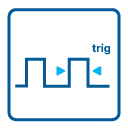
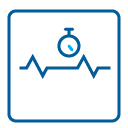
Timestamp
The timestamp option writes the time positions of the trigger events in an extra memory. The timestamps are relative to the start of recording, a defined zero time, externally synchronized to a radio clock, or a GPS receiver. With this option acquisitions of systems on different locations can be set in a precise time relation.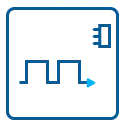
External Clock
Using a dedicated connector a sampling clock can be fed in from an external system. It's also possible to output the internally used sampling clock to synchronize external equipment to this clock.
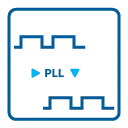
Reference Clock
The option to use a precise external reference clock (normally 10 MHz) is necessary to synchronize the board for high-quality measurements with external equipment (like a signal source). It's also possible to enhance the quality of the sampling clock in this way. The driver automatically generates the requested sampling clock from the fed in reference clock.
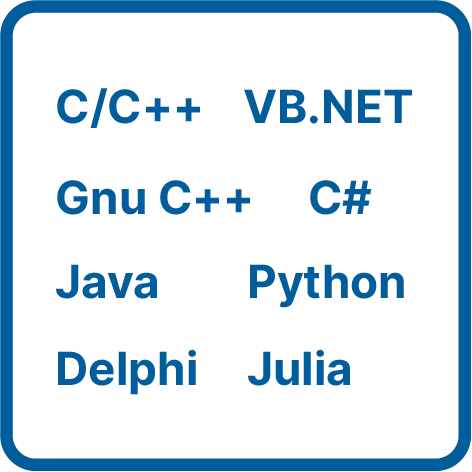
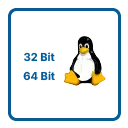
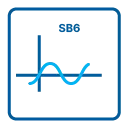
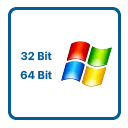
This standard driver is included in the card delivery and it is possible to get the newest driver version free of charge from our homepage at any time. There are no additional SDK fees for the classical text-based programming. All boards are delivered with drivers for Windows 7, Windows 8, Windows 10 and Windows 11, all 32 bit and 64 bit.
| Product | Channels | Max. Samplerate |
|---|---|---|
| MI.7005 | 16 | 125 MS/s |
| MI.7010 | 16 | 125 MS/s |
| MI.7011 | 32 | 125 MS/s |
| MI.7021 | 64 | 125 MS/s |
| On different platforms | Bus | Max. Bus Transfer speed |
|---|---|---|
| M2i.7020 | PCI-X | 245 MByte/s |
| M2i.7020-Exp | PCI Express x1 | 160 MByte/s |
| MC.7020 | CompactPCI | 100 MByte/s |
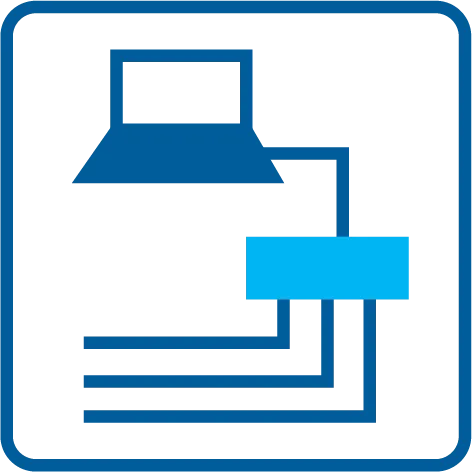
Docking Stations (Optional)
All Spectrum products can be used in 3rd party docking stations, connected by either PCIe interface card or by Thunderbolt interface. Docking stations can extend a standard PC by up to 16 PCIe slots.Documents
Data sheet of the MI.70xx family |
21.02.2022 | 241 K | ||
Manual of MI.70xx family |
21.02.2022 | 3 M | ||
MI / MC Timestamp module datasheet |
21.02.2022 | 106 K | ||
MI / MC StarHub module datasheet |
21.02.2022 | 218 K | ||
MI / MC Extra I/O module datasheet |
21.02.2022 | 129 K | ||
Data sheet of SBench 6 |
15.01.2024 | 999 K | ||
Manual for MATLAB drivers for MI/MC/MX |
21.02.2022 | 70 K | ||
LabVIEW Manual for MI/MC/MX.70xx |
21.02.2022 | 240 K | ||
Manual for SBench 6 |
21.02.2022 | 7 M |
WINDOWS DRIVER + SOFTWARE
MI/MC/MX/PCI.xxx Windows 98/NT 32 Bit Drivers |
21.02.2022 | 353 K | ||
MI/MC/MX/PCI.xxx Windows XP/Vista 32 Bit Drivers |
21.02.2022 | 381 K | ||
MI/MC/MX/PCI.xxx Windows XP/Vista 64 Bit Drivers |
21.02.2022 | 579 K | ||
MI/MC/MX/PCI.xxx Windows 7/8 32 Bit Drivers |
4 | 21.02.2022 | 397 K | |
MI/MC/MX/PCI.xxx Windows 7/8 64 Bit Drivers |
4 | 21.02.2022 | 604 K | |
MI/MC/MX/PCI.xxx Windows 10 32 Bit Drivers |
4 | 21.02.2022 | 415 K | |
MI/MC/MX/PCI.xxx Windows 10/11 64 Bit Drivers |
4 | 21.02.2022 | 627 K | |
C/C++ driver header and library files |
7.01 | 22.04.2024 | 43 K | |
SBench 5 Installer |
5.3.0 | 21.02.2022 | 5 M | |
SBench 6 (32-bit) Installer / Windows 7, 8, 10 |
6.5.08 | 22.04.2024 | 36 M | |
SBench 6 (64-bit) Installer / Windows 7, 8, 10, 11 |
6.5.08 | 22.04.2024 | 39 M | |
MI / MC / MX MATLAB driver + examples |
21.02.2022 | 714 K | ||
MI / MC / MX LabVIEW Driver |
21.02.2022 | 8 M | ||
MI / MC / MX Examples for C/C++, Delphi, VB, LabWindows/CVI, ... |
21.02.2022 | 700 K |
LINUX DRIVER + SOFTWARE
MI / MC / MX Linux 32 bit and 64 bit Drivers |
4 | 21.02.2022 | 18 M | |
SBench 6 Linux 32 (.rpm) |
6.5.08 | 22.04.2024 | 26 M | |
SBench 6 Linux 64 (.rpm) |
6.5.08 | 22.04.2024 | 26 M | |
SBench 6 Linux 32 (.deb) |
6.5.08 | 22.04.2024 | 23 M | |
SBench 6 Linux 64 (.deb) |
6.5.08 | 22.04.2024 | 22 M | |
SBench6 Jetson (.deb) |
6.5.08 | 22.04.2024 | 11 M | |
MI / MC / MX Linux Examples (C/C++) |
21.02.2022 | 53 K |
Firmware
Case Studies
| Digital Data Logger | Real-time high speed digital data logger for embedded systems |
21.02.2022 | 510 K |
Product Notes
| Trigger and Sync | Trigger, Clock and Synchronization Details at high-speed Digitizers |
21.02.2022 | 1 M |
